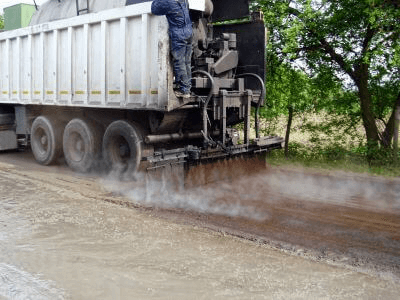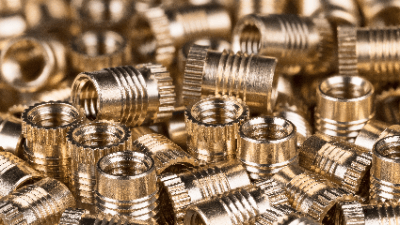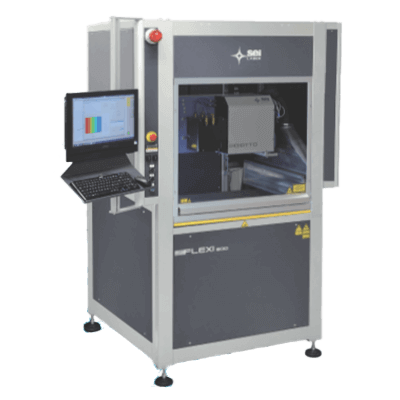¿Qué es la Emulsión Asfáltica?

Emulsión asfáltica es un material que puede instalarse a temperatura ambiente.
El asfalto suele calentarse y aplicarse en estado líquido, mientras que las emulsiones de betún pueden aplicarse a temperatura ambiente.
Aplicaciones de las Emulsiones Asfálticas
1. Pavimentación de Carreteras
Las emulsiones asfálticas se utilizan como capas de imprimación y de adherencia en pavimentos asfálticos. Los pavimentos asfálticos típicos constan de una capa de rodadura formada por piedras trituradas sobre un firme (suelo), una capa de base y una capa superficial formada por la colocación de una mezcla asfáltica calentada sobre la capa de rodadura.
La emulsión asfáltica se extiende sobre la superficie de la calzada después de que ésta se haya formado, formando una capa de imprimación que mejora el ajuste entre la capa base y la calzada formada sobre ella. A veces se denomina simplemente emulsión. Cuando se utiliza como capa de imprimación, también penetra en la superficie de la calzada y la estabiliza.
Además, son eficaces para evitar la socavación del firme debido a las precipitaciones, impidiendo la penetración del agua en la superficie y bloqueando el ascenso capilar de la humedad del firme. Emulsión asfáltica también puede extenderse sobre la superficie de la capa de base después de la formación de la capa de base para formar una capa de adherencia que mejore el ajuste entre la capa de superficie y la capa de base que se forma sobre ella.
Otras pueden extenderse tras la formación de la capa superficial y utilizarse para tratar la superficie del pavimento. Las Emulsiones asfálticas también son adecuadas para impermeabilizar estructuras distintas de los pavimentos.
2. Fomento del Reverdecimiento
Las emulsiones asfálticas también se utilizan para promover el reverdecimiento. Por ejemplo, si se siembran semillas en la superficie, la lluvia las arrastrará.
Sin embargo, si se pulveriza una mezcla de semillas, tierra, abono y agua sobre la superficie y luego se cubre con una emulsión, las semillas pueden quedar protegidas de la erosión de la lluvia. Por lo tanto, las Emulsiones asfálticas también son adecuadas para promover la revegetación.
Principio de las Emulsiones Asfálticas
Las emulsiones asfálticas se fabrican dispersando finas partículas de asfalto en agua mediante un emulsionante. Se caracterizan por el hecho de que pueden pulverizarse a temperatura ambiente. Tras la pulverización, el agua y las partículas de Asfalto se separan, haciendo que las partículas de Asfalto se agreguen y formen una película adhesiva.
Los principales ingredientes son el betún puro, el agua y los emulsionantes, y el principal ingrediente, el betún puro, representa entre el 50% y el 70% del total. El siguiente componente más común después del Asfalto es el agua, seguido de los emulsionantes.
Tipos de Emulsiones Asfálticas
Las emulsiones asfálticas se clasifican en tres categorías según el tipo de emulsionante, que es un tensioactivo: “emulsiones catiónicas”, “emulsiones aniónicas” y “emulsiones no iónicas”. Aunque los emulsionantes están presentes en menor cantidad que otros componentes, sus propiedades tienen una influencia significativa en las propiedades de las Emulsiones asfálticas.
1. Emulsiones Catiónicas
Las emulsiones catiónicas son emulsionantes catiónicos. El agua y las partículas de Asfalto se separan fácilmente tras la pulverización y se forma una película sin esperar a que el agua se evapore.
Las emulsiones catiónicas representan la mayor parte de las emulsiones bituminosas utilizadas para los pavimentos bituminosos, ya que pueden formar rápidamente una película sobre la superficie de la piedra triturada.
2. Emulsiones Aniónicas
Las emulsiones aniónicas son emulsiones que utilizan emulgentes aniónicos. Tienen la desventaja de que las partículas de agua y Asfalto son difíciles de separar y tardan más en formar una película.
Sin embargo, son muy estables como emulsiones y pueden almacenarse durante largos periodos. Se utiliza como emulsión asfáltica para impermeabilización.
3. Emulsiones No Iónicas
Las emulsiones no iónicas son emulsionantes. Las emulsiones no iónicas se caracterizan por su falta de carga y su gran estabilidad química. Pueden mezclarse fácilmente con sustancias alcalinas como el cemento y se utilizan, por ejemplo, como emulsiones para métodos de rehabilitación de firmes y morteros de emulsión de cemento.
Más Información sobre las Emulsiones Asfálticas
Ventajas de las Emulsiones Asfálticas
El Asfalto ordinario tiene propiedades de baja fluidez a temperatura ambiente. Por ello, cuando se utiliza para la pavimentación de carreteras, debe calentarse a varios cientos de grados centígrados o mezclarse con un disolvente orgánico. Esto ha dado lugar a problemas como la generación de olores inusuales durante el calentamiento.
En cambio, las emulsiones asfálticas no requieren calentamiento y pueden aplicarse a temperatura ambiente. Como resultado, son fáciles de manejar, no producen olores extraños y pueden reducir las emisiones de dióxido de carbono, lo que amplía su campo de aplicación, ya que pueden contribuir al medio ambiente.

